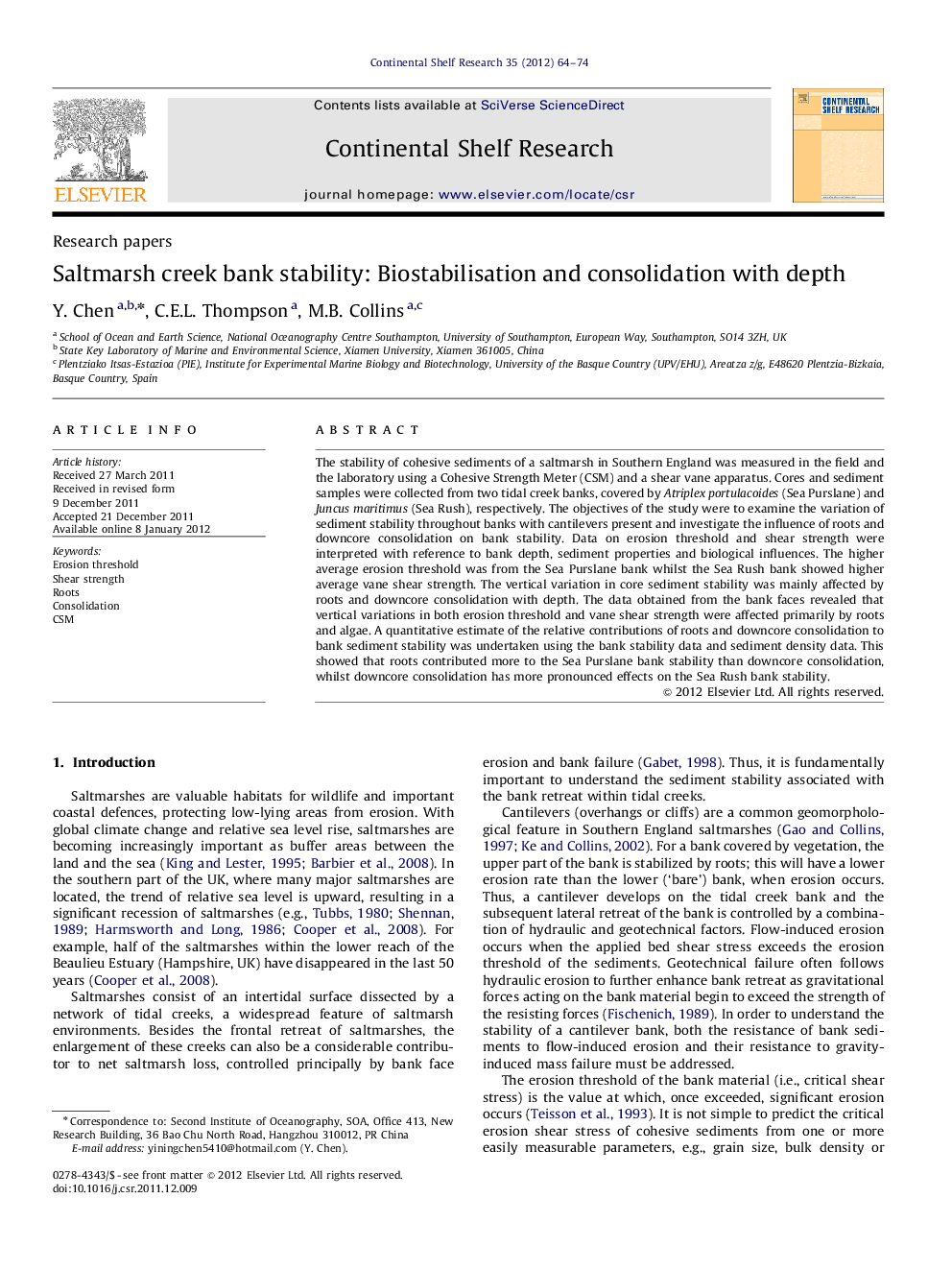| Article ID | Journal | Published Year | Pages | File Type |
|---|---|---|---|---|
| 4532508 | Continental Shelf Research | 2012 | 11 Pages |
The stability of cohesive sediments of a saltmarsh in Southern England was measured in the field and the laboratory using a Cohesive Strength Meter (CSM) and a shear vane apparatus. Cores and sediment samples were collected from two tidal creek banks, covered by Atriplex portulacoides (Sea Purslane) and Juncus maritimus (Sea Rush), respectively. The objectives of the study were to examine the variation of sediment stability throughout banks with cantilevers present and investigate the influence of roots and downcore consolidation on bank stability. Data on erosion threshold and shear strength were interpreted with reference to bank depth, sediment properties and biological influences. The higher average erosion threshold was from the Sea Purslane bank whilst the Sea Rush bank showed higher average vane shear strength. The vertical variation in core sediment stability was mainly affected by roots and downcore consolidation with depth. The data obtained from the bank faces revealed that vertical variations in both erosion threshold and vane shear strength were affected primarily by roots and algae. A quantitative estimate of the relative contributions of roots and downcore consolidation to bank sediment stability was undertaken using the bank stability data and sediment density data. This showed that roots contributed more to the Sea Purslane bank stability than downcore consolidation, whilst downcore consolidation has more pronounced effects on the Sea Rush bank stability.
► We examined bank sediment stability using erosion threshold and shear strength. ► Stability was interpreted with reference to bank depth, roots and consolidation. ► Roots and consolidation were the major contributors to sediment stability variation. ► We estimated the contributions of each factor based on measurements and models.
